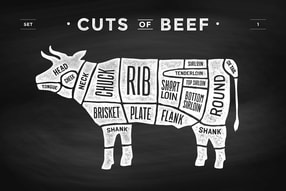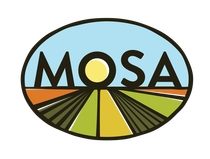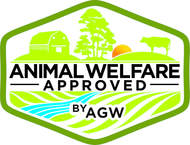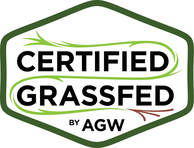|
Finishing in Fall/Winter.
This is our 9th year since buying the farm and our 6th year in operations. Every year we improve, learn, and do things better. For the last few years we have been able to narrow our calving season between April- June and our harvest season late Fall/early winter. This year we have a few harvest dates in November, most in December, and some more will be in January/February 2022 (we are only opening 2021 for now). With this in mind, we have (successfully) been working to extend our grazing season to mid December. It's been nice to see our December harvest finish in fresh grass! When grazing season is over though, we have been separating our finishers from the rest of the herd to give them a different quality feed. Our best, high carbohydrate feed goes to them (also an "all you can eat buffet"!) and we have been very successful at finishing these animals in the early winter months on grass and our best quality hay. Choose Your Processor. We use 2 processors for our beef and pork- Lake Geneva Country Meats and Wilson Farm Meats. We have good relationships with both and have been very happy with their work and service to our customers. However, we know some of you prefer one and others prefer the other, for different reasons, so we now have a "drop down" menu to select the harvest date AND processor. Keep in mind! you need to add 2-3 weeks to that harvest date to figure out when your beef will actually be ready! Request a Size. When we harvest, we usually bring 2 or more animals at a time. While we make sure our animals are well finished for processing, some animals are just genetically bigger than others. Some customers have smaller families and want less beef, and others want more, so this year we would like for you to notify us in our COMMENTS box when making your reservation if you want BIG or SMALL. When the processor gives us the hanging weights we can then try to accommodate our customers preference for more or less beef. If you have bought from us in the past, you can even let us know if you were satisfied with your last amount or want more/less. I can look back at the hanging weight you had and go from there. While this is not a guarantee, it will help us better assign harvested animals to customers based on their needs. It also may be that you are ordering a half instead of a quarter but want a "small half" so you are not overwhelmed by too much beef. Pricing Changes (Tier-pricing). We've been selling in bulk now for about 6 years with the same pricing. Unfortunately, everything else has gone up! This year, we needed to slightly increase the price per hanging weight pound, but decided to now offer "tier pricing". What this means is that if you buy a whole beef you get the same old price of $4.95/lb, for a half side beef $5.25/lb, and for a quarter side $5.50/lb. Of course, you can get creative and economical by buying with a friend, family member, or neighbor, but we request we only deal with one person for payment and communication and the processor will also get the cutting instructions from this one person, even if you are dividing it with others, so please arrange accordingly! That's it! We will work hard in the coming months to use the best grazing management for healthy grasses, healthy soil, and best finishing for our animals. Thank you for your continued support!
0 Comments
Last week we went to Central High School in Kenosha County to present to a Freshmen AP Geography class about Sustainable, Organic, and Regenerative Agriculture. It was super fun for Paul and I to talk to kids, who are the future of this country, about what is possible with Regenerative Ag. Something that is catching on in mainstream as a better, healthier way to farm for the environment and for our health.
After introducing ourselves and talking about who we are and what we do, we gave a background about the history of modern/industrial agriculture. Starting with "Old MacDonald", who use to do everything and integrated plants, crops, and a variety of animals, to industrialization bringing machinery, pesticides and fertilizers, specialization and "getting bigger" for efficiency. These were all things that were welcome by overworked farmers and actually did improve the lives and work of farmers at the time. However, nobody was able to foresee the consequences of these. Today, we know what these are- for our health and for the environment. Read about these in slides #16-#17. We then talked about what Organic farming, Animal Welfare, and additional certifications we pursued, given that organic standards have gotten relaxed (especially when it comes to animal welfare) once Big Ag got into it. Lastly, we talked about Regenerative Agriculture as a system of principles and practices that is not only "sustainable" but actually increases biodiversity, enriches soils, improves watersheds, and enhances ecosystem services. We talked about the importance of SOIL health. It ALL starts with healthy soil, something I found interesting and contrasting coming from a nutrition world when Hippocrates said "all disease begins in the gut". in human health, we have discovered most disease starts with an unhealthy gut. Similarly, we are now realizing, a healthy environment, and healthy food, starts with healthy soil. We explained the differences of grass fed vs. grain fed cows for beef and dairy. There are numerous health benefits of grass fed beef vs. grain fed, which includes less saturated and overall fat and more of the good fats like Omega 3s and CLA's in grass fed beef and dairy. We touched on the economics of farming, a sad reality of our broken food system that pays more for cheap, processed, and industrialized food than it does for "real food". It is more profitable for many farmers to grow commodity crops like soy and corn, sell them to the market where they get processed into your packaged food, and sold for very cheap at the store- than it is to grow healthier vegetables or pastured animals. Lastly, we provided a number of resources of local and some national organizations that have a wealth of information on these topics, and also some interesting books and documentaries we thought the kids (or anybody!) might like. At the end, we took in questions... with many very thoughtful and interesting questions coming from the kids. We welcome questions from you too! Please leave a comment, emil us, or contact us if you have any questions about anything you read in the presentation, what we do, or anything you'd like to ask us! We are happy to answer as best we can! Thanks for reading, and stay tuned for some more "educational" posts coming in the next few months.  Sustainability These days I hear “Nose to Tail cooking” as a culinary trend and I’m happy about that! Nose-to-tail cooking is all about sustainability, and this is very important to us- and it should be for you too! See, a farmer can’t raise a pork chop. A farmer can’t raise a rib eye steak, or a leg of lamb. You have to raise a whole pig, a whole lamb, and a whole cow. It’s pretty simple: Tossing out valuable parts of the animal doesn’t make sense environmentally or economically. But what does “nose to tail” mean? It means eating and using all parts of the animal- its less popular steaks, roasts, organ meats, bones, even the tallow has (once again) become a popular fat to use for cooking. This is why by selling in bulk, we encourage sustainability, and a more economical way for our customers to get quality grass fed beef. Nose to Tail Around the World Using the whole animal is a practice that is still common in many countries around the world. We experience this firsthand in travels to Uruguay and Argentina- where they are so proud of their (grass fed) beef and will gladly talk to you for hours about where it comes from, the different cuts, how to cook it, and how to eat it. In Barcelona, we went to the famous market “La Boqueria” where they sell everything under the sun, including EVERY cut imaginable of meat. I admit seeing the lamb’s head for sale blew me away! However, aside from this ultra-foodie “nose- to tail eating” trend, it has largely slipped from the Western mindset. I think this is mainly due to the lack of connection we have from our food sources, embodied by the fact that meat has become industrialized and is now perfectly portioned into pink patties, shrink-wrapped in plastic and resembling in no way whatsoever any known animal. Unfortunately for us, in our finicky attitudes about food, we’ve been overlooking fine cuts of meat, tasty delicacies and, of course, the spice of life — variety! Honoring the Animal and Our Environment To maximize the nourishment you can receive from a living creature is to honor that it was, in fact, living. By not using the whole animal, we’re not respecting other living creatures. Giving thanks to the animal for supplying your meal is a good start, but it’s really when we choose to honor the whole animal that we take a step forward in mindful consumerism and changing our food supply system. In so doing, we encourage a mindset that fights excess waste and increases appreciation for the animals that nourish us. For Your Health A direct effect of eating the whole animal is- it’s good for your body. As I learned in my nutrition studies, Americans tend to promote certain cuts more than others (i.e. chicken breast, salmon, tenderloins, etc..) but the reality is, just like humans, animals store different nutrients in different parts of their bodies, and by eating the same cuts over and over, you are getting the same nutrients and neglecting to get other important ones. Our Own Experience A few years before starting our farm, we bought our first ¼ beef steer from our farming mentor, and now friend, Krusen Grass Farm in Wisconsin for our own beef consumption. I won’t lie, when Paul told me about trying it out, I hesitated. At that point, I knew nothing about “bulk buying”, how it works, how much beef I was going to get, and exactly what cuts. I was used to cooking with ground beef and the occasional steak Paul would throw on the grill, but beyond that, I knew nothing about a pot roast, a round steak, and slow cooking beef was a concept beyond my culinary repertoire. The experience of buying in bulk opened a new world of cooking and flavors for us! We had to do something with the cuts of beef I knew nothing about- so I’d look for a recipe, cook it up (way easier than I ever thought) and be surprised by how delicious and easy it was to cook all these different cuts!. We were very pleased by chuck steaks, and top butt steaks, rump roast, sirloin tip, round steaks, and even tried a couple of liver pate recipes that actually delighted us! This idea that by buying a ¼ of an animal, splitting the entire animal with others, gave us a good feeling that we were honoring the whole animal as well as helping the farmer go through its inventory. We encourage our customers to buy in bulk, but otherwise to try different cuts of beef. We are here to help with cooking instructions and/or recipe ideas! And stay tuned for next month when I will blog about “Nose to Tail How-To”. Springtime at the farm is a busy time. We get ready to transition the cows from eating hay (that we harvested last year) to the new fresh grass that is growing in our pastures. One of the “dirty” jobs at the moment is to spread manure that built up during the winter over the fields (manure: a nice way of saying cow shit mixed with straw and hay). Coming from my previous career in finance, where I was a sales person, I feel right at home spreading the manure. In sales I could “shoot the shit”, “spread the shit”, and “bull shit” with the best of them, so how appropriate that I get to lay it on thick in our fields now! Some of you may be thinking it is disgusting, or ask why the heck do we do that?!?….. Well, I will try to answer those questions. Cow "caca", to organic/sustainable farmers, is brown gold! This dookie is what makes our sustainable business work. The dung increases the fertility on our land. It adds organic material (humus) to the soil, which helps buffer the drying effects on soil during a drought by holding more water, essentially becoming a sponge. Unlike conventional farmers, we don’t have to use chemicals to fertilize our farm. The manure provides the food for our plants, animals, and the other micro organisms (fungi, bacteria, earth worms, insects and many other invertebrates) that work in our circle of life environment. It’s a cycle of birth, growth, plateau, decline, death, decomposition/decay, and rebirth. Nature rules! She uses everything by recycling it, making our soil rich and full of life. The cows give our farm an advantage, we are able to close our farm to any outside inputs. We create a closed circle where the soil, plants, and animals work together and continue to build soil health. Through this interaction we have a diverse set of nutrients and micronutrients in our soils, and by that in the food we produce. Soil scientist J.I. Rodale said it best, “ Healthy soil, healthy food, healthy people.” Farming is a humbling endeavor. We have no control over Mother Nature, she has the final say. It is humbling working with cow pies, but it is so important to being sustainable. And think about how many different words we have for crap… when a word has that many synonyms, it has to be important! Changing my kids diapers and now having cows, I am over my poop phobia! With my new perspective as an organic/sustainable farmer, I like it when someone says, “have a shitty day!“ |
AuthorMarisa usually writes about nutrition, grass fed beef, organic agriculture, as well as sharing delicious recipes; Paul writes about farm work- sharing his stories and experiences, and most times... we both collaborate on the stories! Archives
March 2024
Categories
All
|
 RSS Feed
RSS Feed


